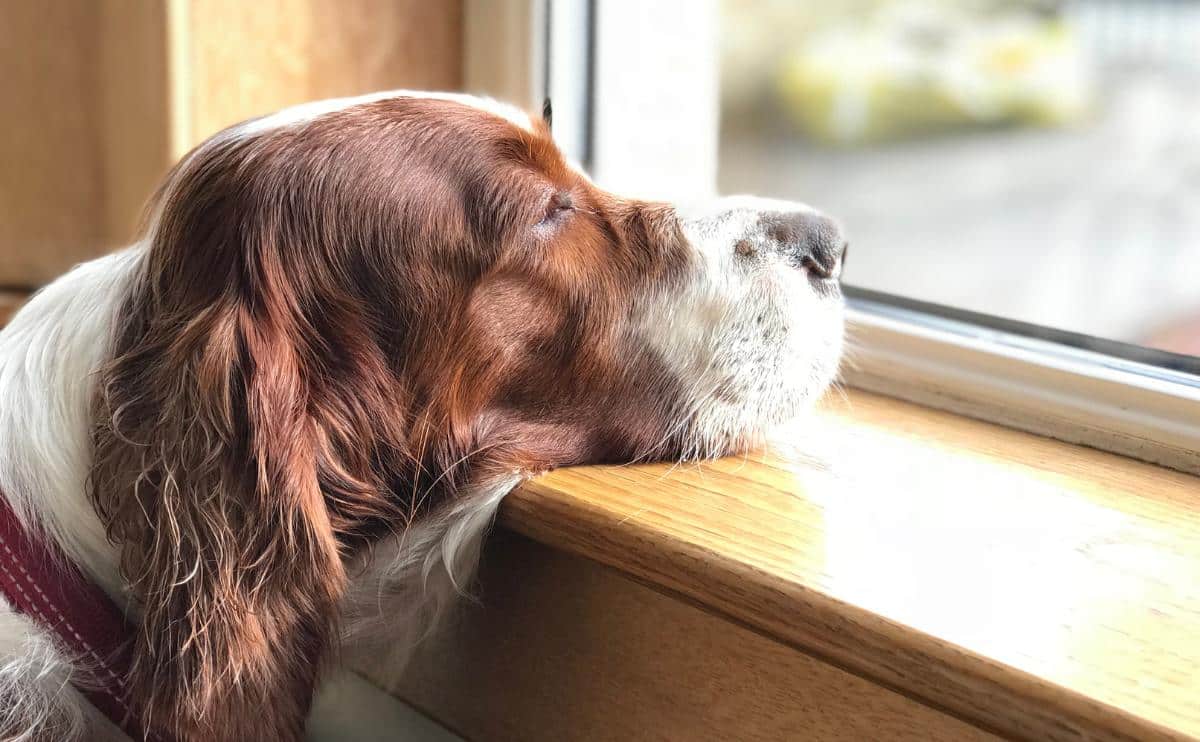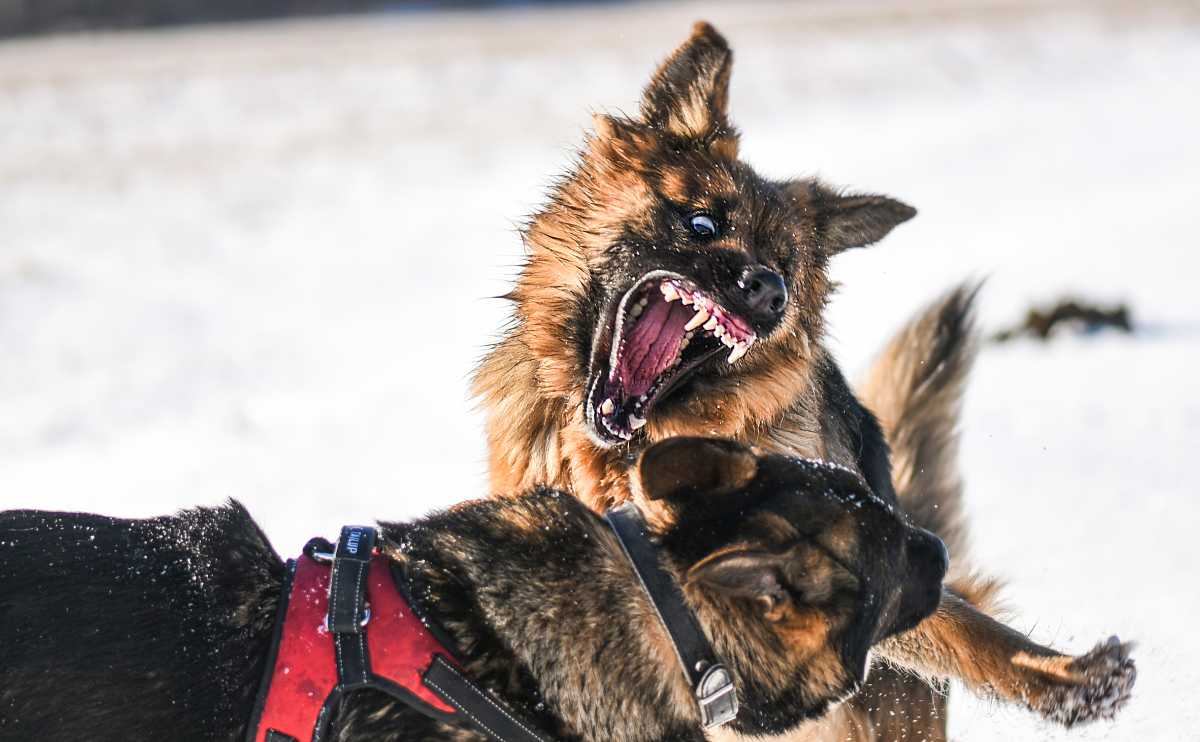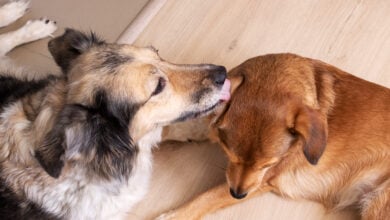How To Stop A Dog From Biting: Proven Tips For Puppies And Adults
When you purchase through links on our site, we may earn a commission. Here’s how it works.
Every year, millions of people, including children, are bitten by dogs, often in situations their owners never saw coming. If you’ve been searching for how to stop a dog from biting, you already know it’s not just about protecting yourself; it’s about keeping your dog safe, too.
Table of Contents
Whether it’s your teething puppy’s razor-sharp nips or your adult dog’s sudden snap, biting can escalate fast from a harmless quirk to a dangerous habit.

The good news? With the proper training techniques, you can stop biting behaviors before they put your safety or your dog’s future at risk.
We’ll help you know how to start training your pup and when it’s time to seek professional help. In many cases, you can tackle the training on your own to stop your puppy or dog from biting. See our tips and review the resources you may need if you require extra help.
Why Do Dogs Bite?
Before you can figure out how to stop a dog from biting, it’s important to understand why it happens in the first place. While puppies often nip during play as part of learning bite inhibition, adult dogs usually bite for very different, and often more serious, reasons. In many cases, a bite is not about aggression, but about fear, pain, or instinctive protection.
Research from the American Veterinary Medical Association (AVMA) highlights that most bites are a reaction to a specific trigger, rather than unprovoked attacks. Recognizing these triggers is the first step toward prevention.
5 Common Reasons Dogs Bite
- Fear or Startle Response – A dog may react defensively if suddenly startled, cornered, or approached too quickly — especially in unfamiliar environments, such as a vet’s office.
- Protection of Territory or Resources – Dogs may guard their food, toys, puppies, or even their owner, perceiving others as a threat.
- Pain or Illness – Dogs that are injured, sore, or feeling unwell may bite to signal they want to be left alone.
- Lack of Early Socialization or Bite Inhibition Training – Dogs that weren’t taught as puppies how to control bite pressure are more likely to use their mouths inappropriately as adults.
- Chase Instinct – Running away from a dog can trigger prey drive, leading to nipping or biting.
By identifying what’s behind a dog’s biting behavior, you can tailor your training and environment to reduce risks. Often, addressing the root cause is more effective than focusing on the behavior alone.
A Personal Dog Biting Story: Bear’s Wake-Up Call
One of the most common bite triggers, and one we’ve experienced firsthand, is when a dog is startled during an unfamiliar or stressful situation. In fact, one of our team members went through a frightening incident at a veterinary clinic that became a turning point in how they approached bite prevention.

When my three-year-old black Labrador mix, Bear, went in for a routine vaccination, I never imagined it would turn into one of the most stressful days of my life. The vet tech intern was new, and as she approached with the needle, she moved a little too quickly. Bear startled, his eyes went wide, and before I could react, he snapped.
He didn’t break the skin, but it was enough for her to file a report with local animal control.
That night, I barely slept. I kept replaying the moment in my head, the shock on her face, my own racing heart, and the terrifying thought of Bear being quarantined or, worse, labeled dangerous. Animal control came to my home, observed him, and confirmed he was up to date on rabies shots. Since no skin was broken and the snap came from fear, the case was closed without action.
Still, the experience was a wake-up call. I realized that knowing how to stop a dog from biting isn’t just about training puppies, but it’s about preparing for moments when fear, pain, or surprise could cause any dog to react. From that day forward, I committed to working with Bear on bite prevention, and I started using a muzzle for all future vet visits. It wasn’t just about keeping others safe; it was about protecting Bear’s future, too.
– Danielle DeGroot, Rescue Dog Mom, Canine Journal Writer
From Nips to No Bites: How to Stop a Dog from Biting
Knowing how to stop a dog from biting starts with understanding that there is no one-size-fits-all fix. The right approach depends on your dog’s age, temperament, history, and the reason behind the behavior. Still, there are universal strategies every dog owner can use in any situation.
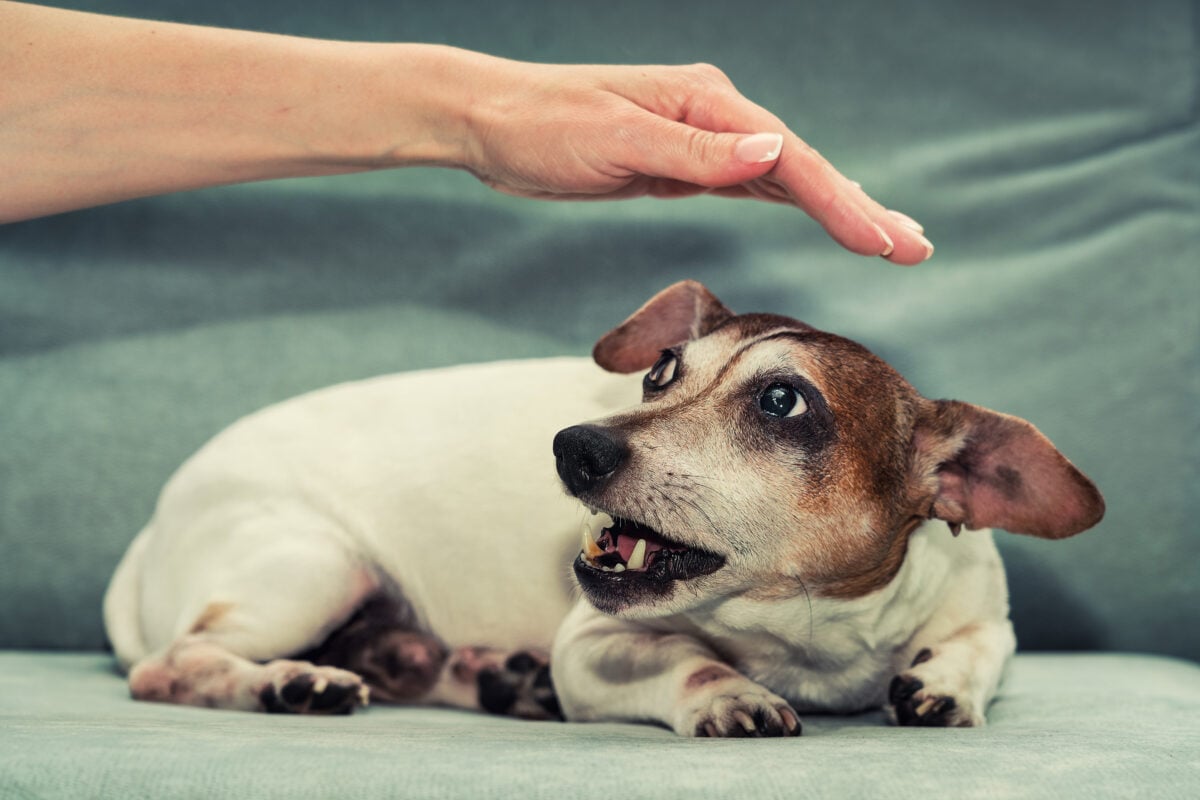
5 Core Principles for Bite Prevention
- Address the cause, not just the symptom – Biting often results from fear, pain, frustration, or overexcitement. Identify and reduce triggers whenever possible.
- Positive reinforcement works best – Reward calm, non-biting behavior with treats, praise, or play. Punishment can increase fear and aggression and make biting worse.
- Supervise high-risk situations – Closely monitor interactions with children, strangers, or other dogs, especially if your dog has a history of snapping or nipping.
- Use safety tools when needed – Muzzles, leashes, and baby gates are tools to protect your dog and others while training takes effect.
- Start early and stay consistent – Puppies should begin bite inhibition work as soon as they come home. Adult dogs can learn new habits with steady, consistent practice.
Next Steps: Tailoring the Training
In the sections that follow, we will cover how to stop a dog from biting at different life stages. We will start with puppy training techniques to prevent bad habits before they form, then move on to methods for adult dogs who may already have a history of biting.
6 Steps to Train A Puppy Not to Bite
Puppies are natural nibblers. Nibbling helps them with the discomfort of the teething process. And puppies and dogs often use their mouths to handle objects rather than their paws.
Puppy nibbling, often called “play biting,” can be annoying and painful for owners. And if you don’t nip biting in the bud early on, it can become a serious problem down the road.
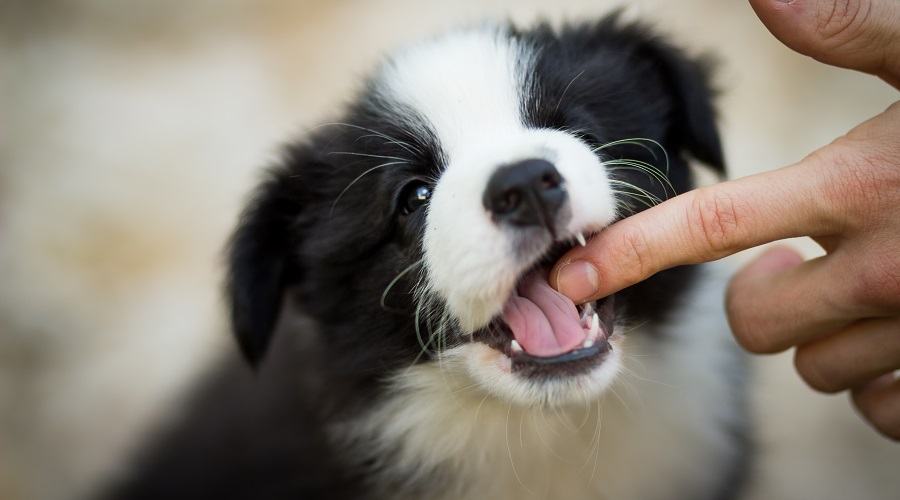
So how do you stop a puppy from biting? Training a puppy not to bite can be easier than you might think. Also, see the video below for some tips on how to stop play biting.
1. Teach Bite Inhibition to Stop Dog Biting Early
Puppies need to be taught not to bite down hard when playing. They naturally do this with each other in a litter by yelping when a sibling goes overboard with a bite.
You can mimic this warning signal when you’re playing with your puppy by making a yelping sound or saying, “Ow!” If your puppy stops biting, reward him with praise and even a treat.
- Keep your tone sharp but not angry.
- Resume play after a short pause so the puppy learns that biting stops the fun.
2. End the Game: A Proven Method to Stop Biting
Simply giving a warning signal doesn’t work for all puppies. Fortunately, there are a few other bite inhibition methods you can try. When playing, if your puppy bites too hard, teach him that it’s game over. You can do this by stopping play immediately and slowly withdrawing your hand.
End the game when biting starts, stop interaction immediately to show that biting leads to no fun or attention.
- Turn your back and cross your arms.
- Avoid eye contact until your puppy calms down.
3. Give Your Puppy an Alternative Chew to Prevent Biting
Keep a puppy chew toy on hand when you’re interacting with your puppy. If he starts nibbling or biting you, then substitute the chew toy for your hand. This helps teach your puppy what is and isn’t appropriate to chew and gnaw on. If he continues to bite you, then it’s game over.
- Keep toys within reach during play sessions.
- Praise your puppy when they chew the toy instead of you.
4. When It’s Time for a Time-Out to Stop Biting
If you’ve tried the methods above and your puppy continues to bite you and be overly excited, then you can put him in his crate until he calms down.
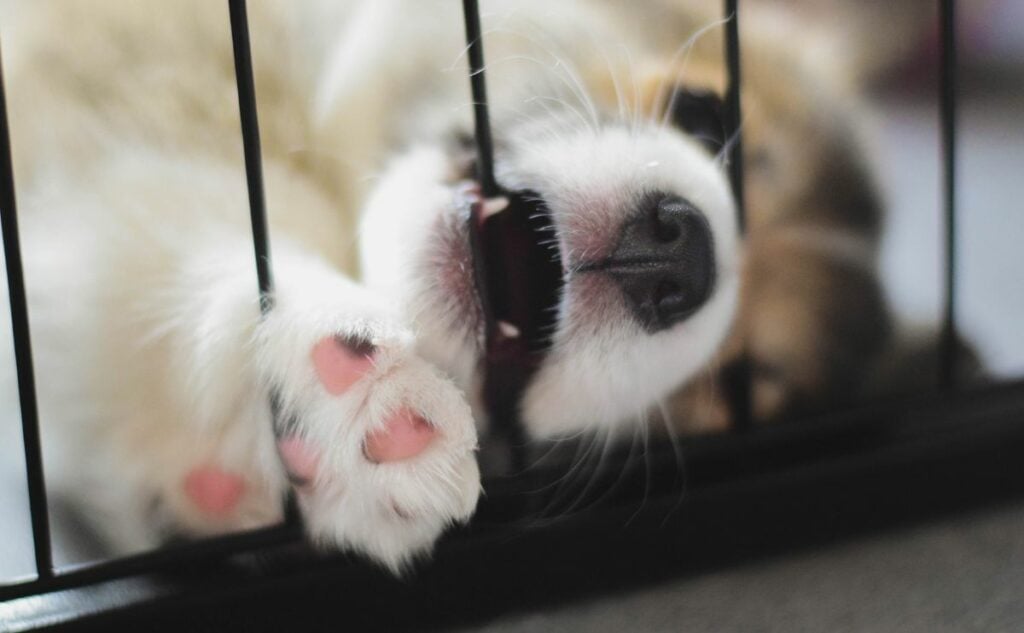
With this method, it’s important not to make his crate seem like a place for punishment. So remain calm and positive when crating your dog.
- Limit time-outs to 30–60 seconds.
- Avoid making the crate feel like punishment; stay calm and neutral.
5. Be Patient and Positive When Stopping Dog Biting
Remember that it takes a while to train a puppy, so be patient as you work on these methods. It’s also crucial for you to use positive reinforcement with your pup. Never yell at him or spank him. This can cause even more aggressive behavior in dogs.
- Use small treats for instant reinforcement.
- Pair verbal praise with petting for extra reward value.
6. Socialization: A Key Step in How to Stop a Dog from Biting
Socializing your puppy is always an excellent way to help reinforce many types of behavior training. Calmly interacting with different types of people creates a more confident pup down the road. You may also want to consider enrolling him in a puppy class for the opportunity to socialize with other dogs.
- Keep experiences positive and low-stress.
- Reward calm behavior in new environments.
How To Stop a Puppy From Play Biting (Video)
While your puppy may be play biting, encouraging this behavior could lead to more severe incidents down the road. Take a look at this video for tips on how to curb biting before it starts.
6 Steps to Stop an Adult Dog from Biting
Adult dogs can bite for many reasons, including fear, overexcitement, or a lack of early training. The good news is that with patience and consistency, you can teach your dog to control their mouth and respond appropriately in any situation. Here are six proven steps to reduce and prevent biting in adult dogs.
1. Teach Gentle Mouthing Cues to Prevent Biting
Even adult dogs can learn softer mouth control with calm, consistent training. Many do not realize that human skin is more sensitive than toys, so set that boundary clearly.
- Use a sharp, high-pitched “Ouch!” or firm “No bite” the instant their mouth touches skin.
- Stop all play or interaction for 30 to 60 seconds so biting is linked to the end of fun.
- Resume only when your dog is relaxed and under control.
2. Redirect to Appropriate Chew Items to Stop Mouthing
Give a positive outlet for chewing and biting instincts to prevent them from using you as a toy.
- Keep safe chew toys, stuffed Kongs, or rope toys within reach during play.
- Swap your hand or clothing for a toy the moment mouthing starts.
- Praise or treat them when they focus on the toy to build a lasting habit.
3. Increase Physical and Mental Stimulation to Curb Biting
Meeting exercise and enrichment needs reduces restlessness and mouthing.
- Schedule daily activities like long walks, fetch, or agility-style games.
- Use puzzle feeders, snuffle mats, or treat-dispensing toys to work their brains.
- Rotate toys weekly to keep interest high.
4. Ignore Attention-Seeking Mouthing to Change Behavior
Some dogs mouth to get a reaction. Withholding that payoff helps the behavior fade over time.
- Stay calm and avoid yelling or pushing them away.
- Turn your back or step away until they stop.
- Give attention only when they are calm and using polite behavior.
5. Train Incompatible Behaviors to Prevent Biting
Teach actions that make biting impossible and redirect energy into something positive.
- Use sit, down, or place during greetings or high-energy moments.
- Reinforce with treats or praise for holding the position.
- Add distractions gradually so they succeed even when excited.
6. Seek Professional Help for Stiff or Aggressive Mouthing
Some signs point to a higher risk and require expert guidance to prevent escalation.
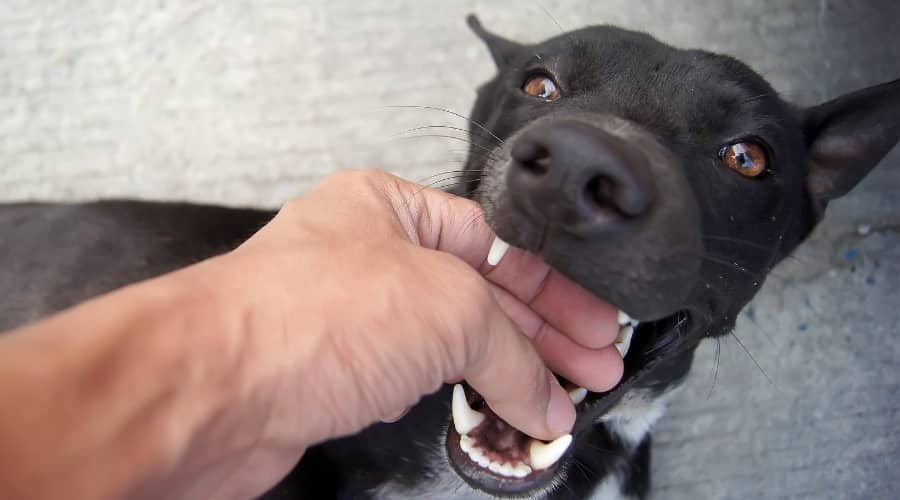
- Watch for a stiff body, hard stare, growling, or snapping before contact.
- Consult a certified force-free trainer or a veterinary behaviorist if issues escalate.
- Avoid punishment-based methods that can increase fear and aggression.
Depending on how your dog is biting, we recommend starting with the puppy training tips above. If these measures don’t work for your adult dog, then it’s time to consider professional help.
It is important for you to be a responsible dog owner and ensure your dog gets all the training he needs to prevent biting. You should seriously consider getting a training collar and either enrolling in an online training course or finding a dog trainer in your local area to help change this dangerous behavior.
5 Ways to Stop Your Dog From Biting When Excited
Some dogs get so caught up in play that their excitement turns into nipping or biting. While they may see it as part of the fun, this behavior can quickly become dangerous, especially around children, guests, or other pets.
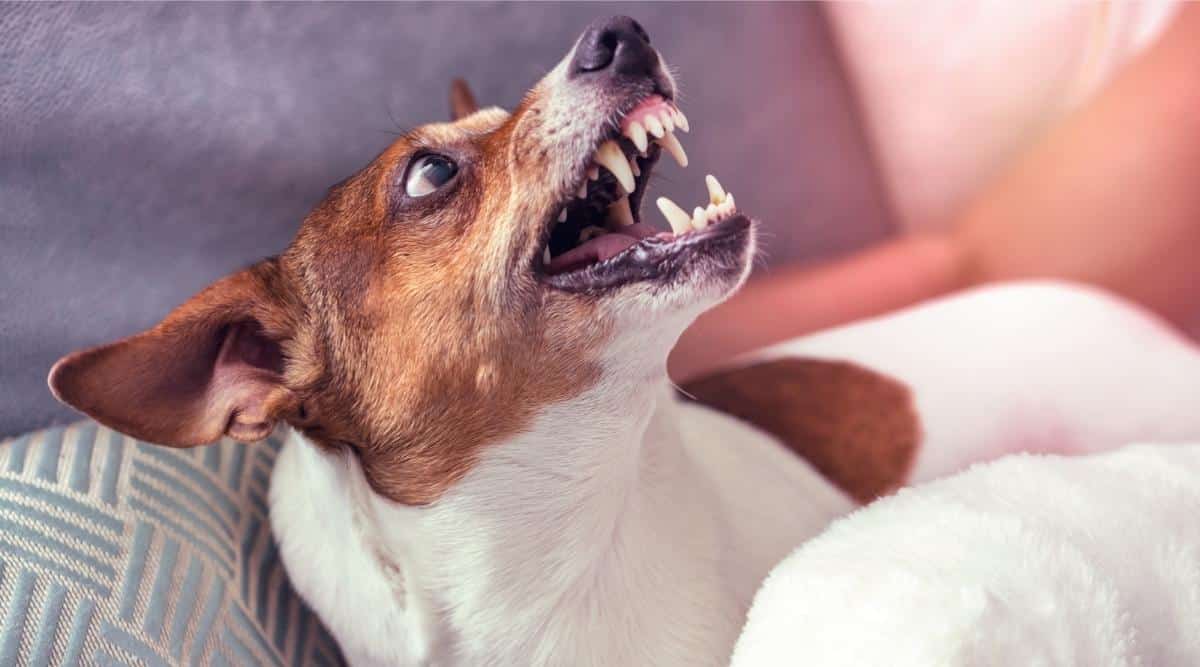
Preventing excitement-related biting requires a combination of managing play, redirecting energy, and teaching impulse control.
1. Recognize the Triggers for Overexcitement
- Watch for signs like jumping, zoomies, barking, or grabbing at clothing before biting starts.
- Identify play styles or toys that tend to make your dog escalate too quickly.
- Note times of day when your dog is naturally more energetic, such as after meals or in the evening.
2. Choose Safe, Low-Excitement Play
- Avoid rough games like wrestling or high-intensity tug-of-war that encourage grabbing and biting.
- Play structured games such as fetch, hide-and-seek, or training-based games that keep your dog’s focus.
- Use puzzle toys and scent work to engage their mind without overstimulating them.
3. Teach Calm Behaviors During Play
- Reward your dog for sitting, lying down, or waiting patiently during breaks in play.
- Practice “leave it” or “drop it” commands so you can interrupt escalating play.
- Incorporate short training sessions during playtime to shift focus away from biting.
4. Redirect the Energy When Needed
- Offer a chew toy or ball the moment your dog starts to mouth your hands or clothing.
- Call them into another room for a quick obedience drill when energy spikes.
- Use a long-line leash during outdoor play for easy control if they get too wound up.
5. Take Strategic Play Breaks
- If your dog’s excitement escalates, pause the game for 30–60 seconds.
- Allow them to calm down before resuming, and reinforce that calmness is key to getting the fun back.
- End the session if they cannot settle, and try again later.
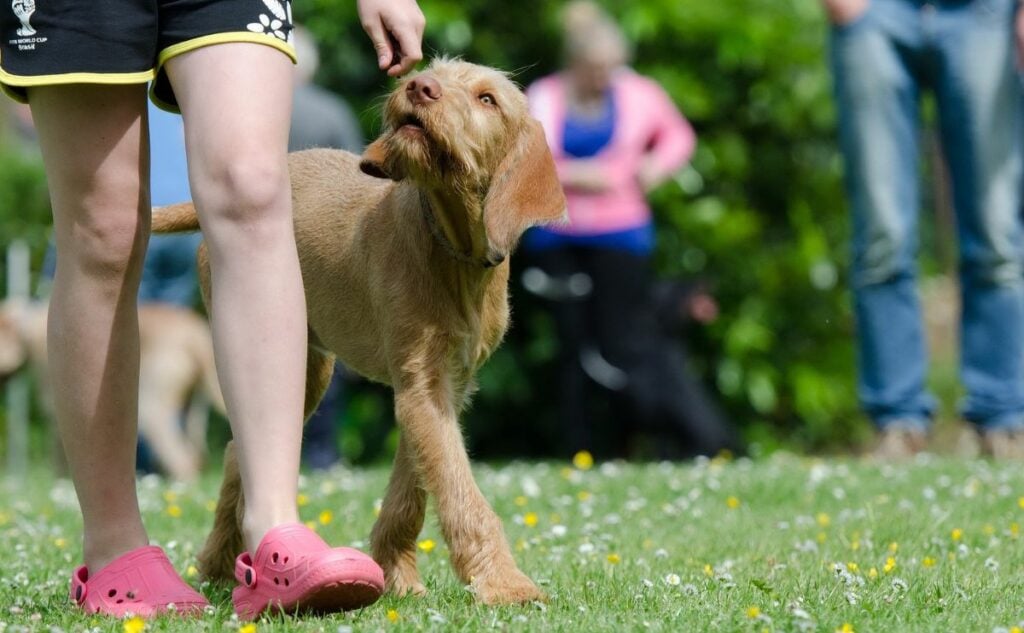
By recognizing triggers, managing play styles, and reinforcing calm behavior, you can stop your dog from biting when excited while strengthening your bond. These strategies work best when combined with the broader training methods in our main guide on how to stop a dog from biting.
Frequently Asked Questions About Stopping Dog Biting
Dog owners often have similar concerns when it comes to biting and nipping. Here are answers to the most common questions about how to stop a dog from biting, drawn from expert advice and real-world experience. If you don’t see yours, let us know in the comments.
Why Does My Dog Nibble Me?
Very gentle dog nibbling can be a sign of affection as well as a way to play. If your dog is calm and simply nibbling you softly, then it’s likely mouthing affection. However, if he’s nibbling you while playing, it’s a good idea not to indulge in this behavior because it could escalate the more excited he gets.
What Should I do if my Dog Bites me?
First, remain calm and avoid reacting in anger. If the bite breaks the skin, wash the wound and seek medical care. Secure your dog in a crate or separate room until both of you are calm.
Make sure you assess your wound, especially if the bite broke your skin. You may need first aid or to visit a doctor.
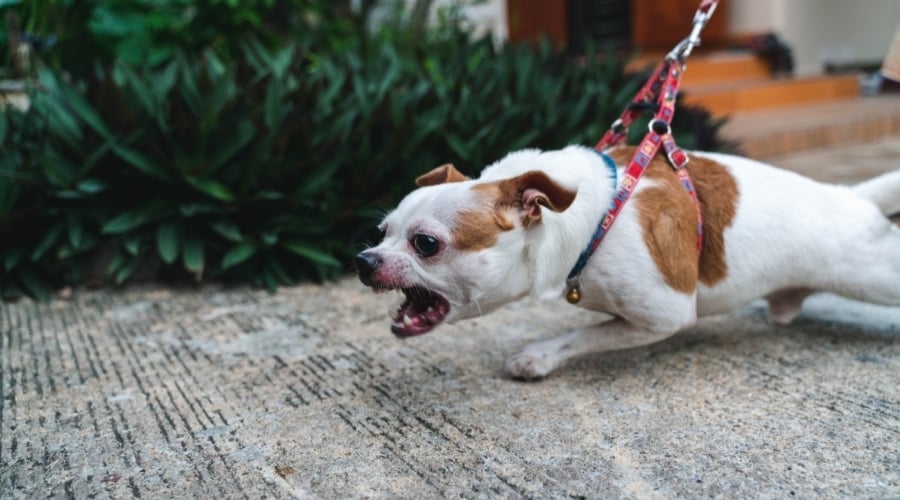
Once everyone has calmed down, approach your dog calmly without being confrontational. Use caution if your furry friend appears anxious or frightened. If he seems calm and you don’t fear he’ll bite you again, then you can let him out of his crate or allow him to approach you. He may need some comfort and reassurance from you.
Then try to identify what triggered the bite and address it through training or environmental changes.
What do I do if my Dog Bites Someone Else?
Biting you is one thing, but biting someone outside of your household presents much more complex scenarios that may involve a fine or legal settlement or could even lead to your dog’s forced euthanasia. It’s best to consider behavioral training now before the problem escalates to this terrifying situation.
Even if your dog has never bitten anyone before, it’s essential to know what to do when your dog bites someone, just in case it ever happens.
- Your first step is to confine your dog immediately.
- Make sure you offer to cover all of the person’s medical expenses and ask to drive them to the ER if the bite is severe.
- Once you’ve taken care of the bite victim, call your homeowner’s insurance company to see if you are protected in this sort of incident. If covered, they can support you if you get sued.
- Get a referral from your veterinarian for an animal behaviorist who works on dog aggression. It would also be wise to take the AKC Canine Good Citizen test — you may need to prove that your dog isn’t dangerous if the courts become involved.
- And if the police get involved and/or you’re being sued, make sure you have a lawyer to represent you.
If Your Dog Bites Another Dog
If your dog bites another dog, separate them immediately and secure both animals to prevent further injury. Check both dogs for wounds and seek veterinary care, even for minor punctures, as they can get infected. Exchange contact details with the other owner, and consider following up with a trainer or behaviorist to prevent future incidents.
Should I Use a Muzzle to Prevent Biting?
A properly fitted basket muzzle can be a valuable safety tool in certain situations, such as vet visits or when meeting new people. It should be introduced gradually and paired with positive experiences. Muzzles are not a substitute for training, but can protect both people and dogs while you work on the underlying behavior.
Why Do Dogs Bite Out of Nowhere?
What seems like a “bite out of nowhere” usually has subtle warning signs, stiff body language, avoiding eye contact, or showing the whites of the eyes. Dogs may bite suddenly if they’re in pain, startled, or guarding something. Learning to read these signals is key to prevention.
Does Neutering Stop Biting?
Neutering can reduce certain hormone-driven behaviors, but it’s not a guaranteed fix for biting. Most biting is linked to fear, frustration, or lack of training rather than hormones. While neutering may help lower reactivity in some cases, training and behavior modification are still essential.
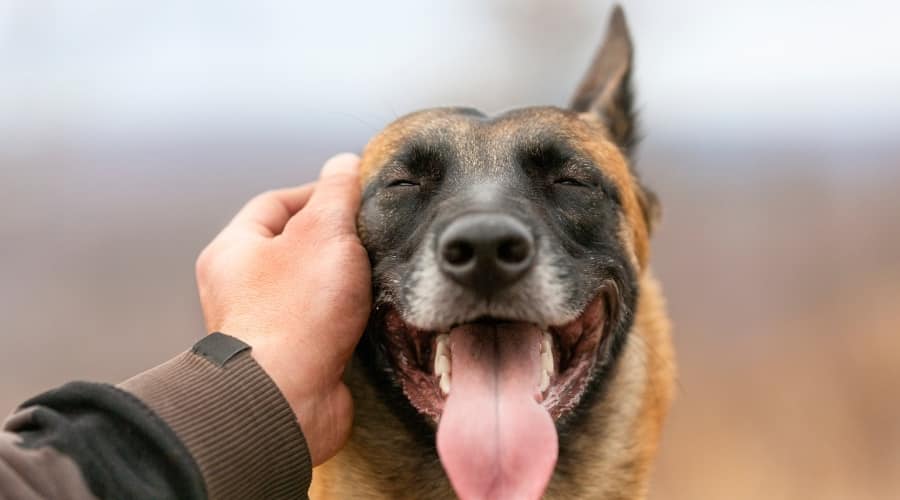
A Safer, Happier Future for You and Your Dog
Preventing dog bites starts with awareness and consistent training. Understand your dog’s triggers, use positive reinforcement, and make safety a daily habit. The payoff is huge: a calmer, more confident dog, a stronger bond, and peace of mind knowing you’ve protected both your loved ones and your dog’s future.
Dog Bite Prevention Tips & Resources
Dog biting is undoubtedly one of the most stressful concerns we have with our furry friends. According to dog bite statistics, it’s more prevalent than you might think — 1 out of every 73 people in the U.S. gets bitten by a dog every year.
We encourage you to use our training tips and resources to help prevent your dog from biting you or someone else. It would also be wise to talk to your homeowner’s insurance company to see if your policy covers dog liability. If not, you might want to apply for a stand-alone dog liability insurance policy to protect your wallet if your dog’s bad behaviors rear up.
Join the Conversation: Share Your Best Tips for Stopping Dog Biting
Have you dealt with nipping, mouthing, or biting and found a method that worked? We’d love to hear from you. Drop your story, question, or best tip in the comments below and help other dog lovers learn how to stop a dog from biting. Your experience might be exactly what someone else needs to keep their dog safe and happy.
